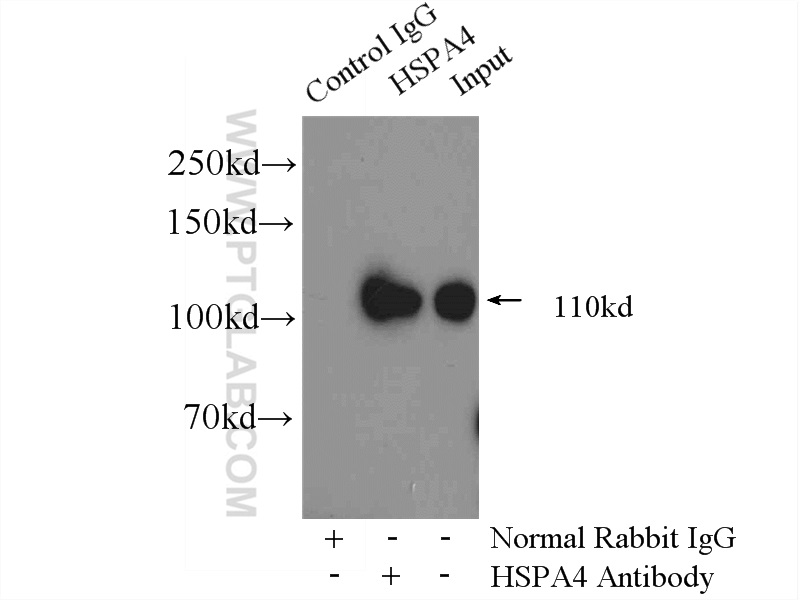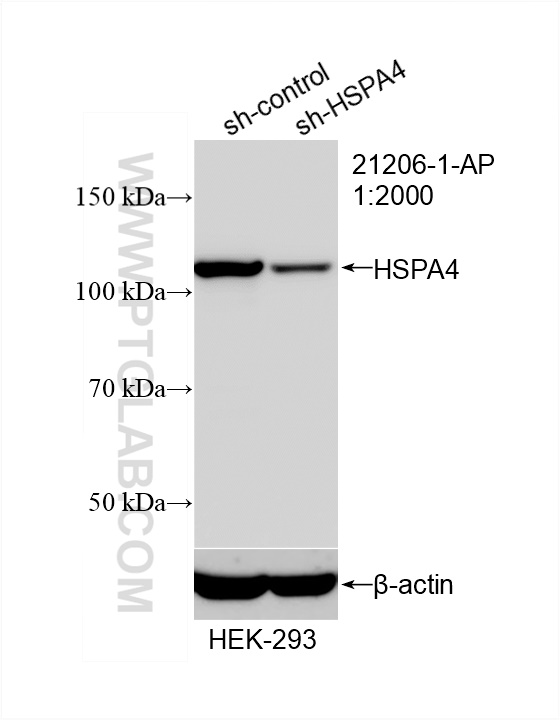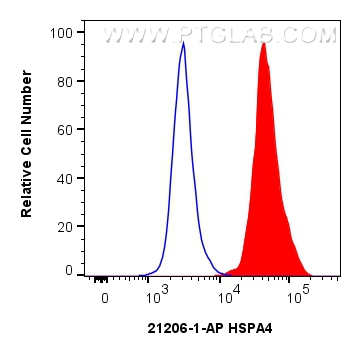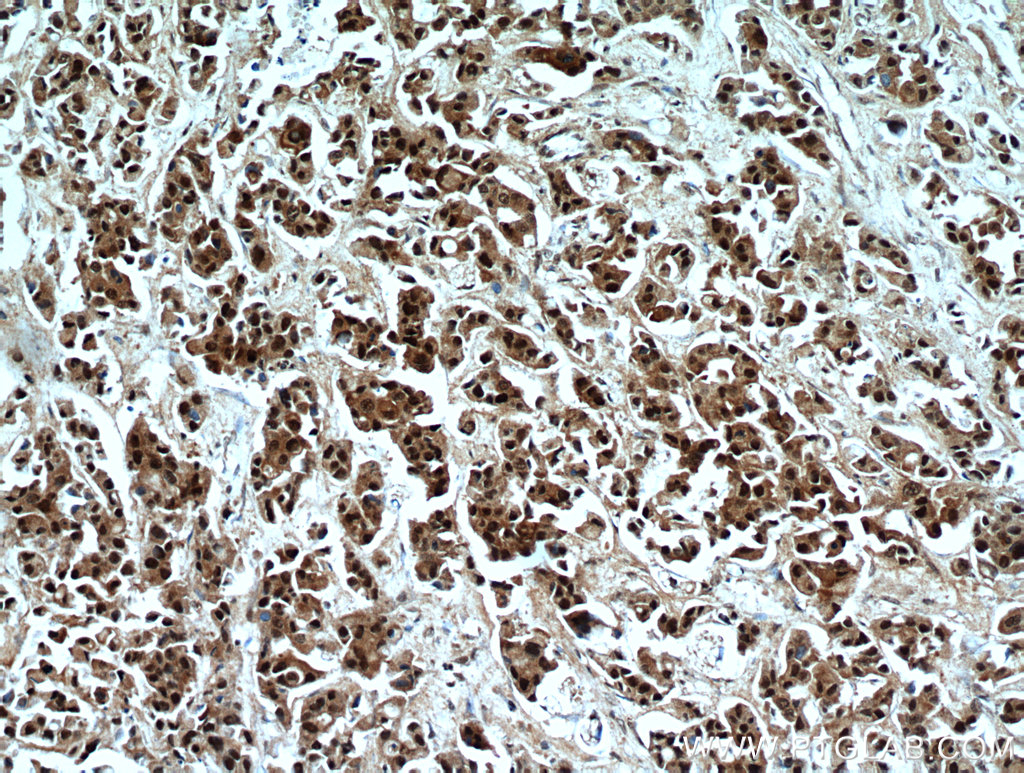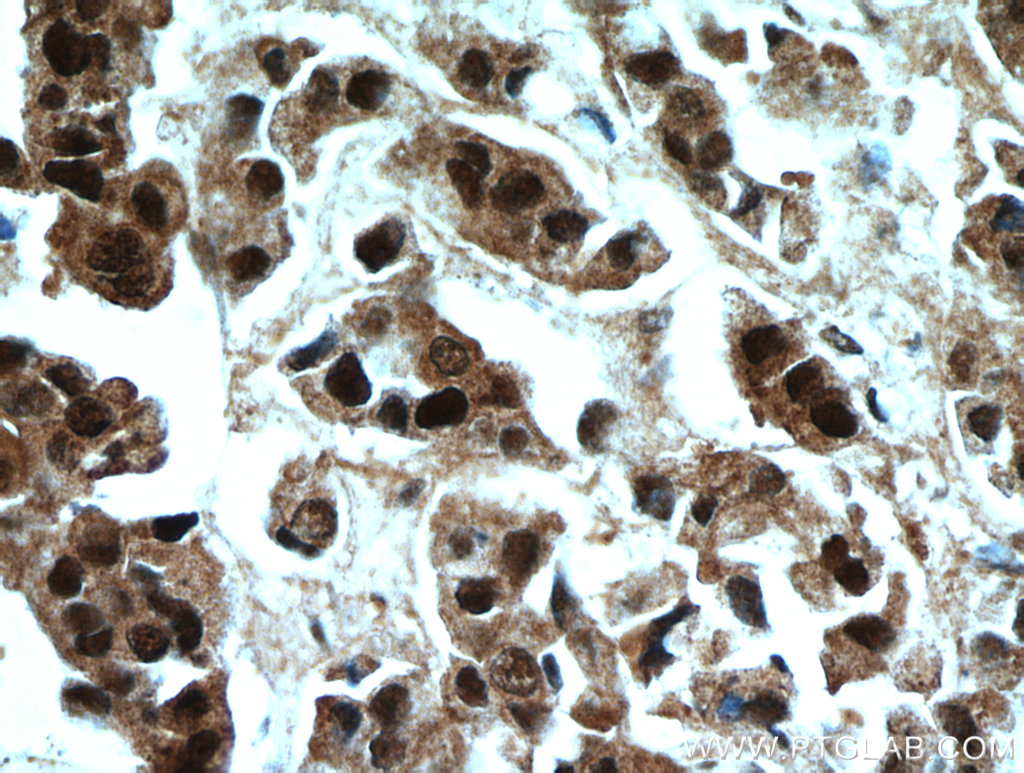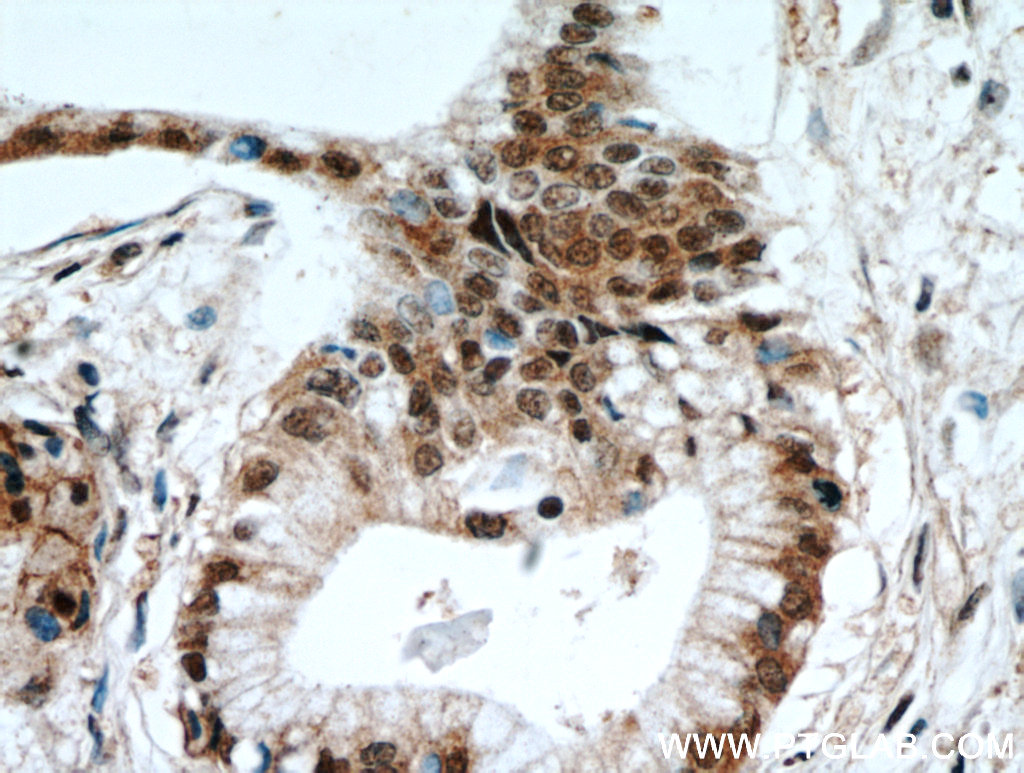验证数据展示
经过测试的应用
| Positive WB detected in | C6 cells, HEK-293 cells, mouse testis tissue, NIH/3T3 cells, mouse brain tissue, rat brain tissue |
| Positive IP detected in | mouse brain tissue |
| Positive IHC detected in | human colon cancer tissue, human breast cancer tissue, human pancreas cancer tissue Note: suggested antigen retrieval with TE buffer pH 9.0; (*) Alternatively, antigen retrieval may be performed with citrate buffer pH 6.0 |
| Positive IF/ICC detected in | MCF-7 cells, HepG2 cells |
| Positive FC (Intra) detected in | C6 cells |
推荐稀释比
| 应用 | 推荐稀释比 |
|---|---|
| Western Blot (WB) | WB : 1:500-1:2000 |
| Immunoprecipitation (IP) | IP : 0.5-4.0 ug for 1.0-3.0 mg of total protein lysate |
| Immunohistochemistry (IHC) | IHC : 1:20-1:200 |
| Immunofluorescence (IF)/ICC | IF/ICC : 1:50-1:500 |
| Flow Cytometry (FC) (INTRA) | FC (INTRA) : 0.40 ug per 10^6 cells in a 100 µl suspension |
| It is recommended that this reagent should be titrated in each testing system to obtain optimal results. | |
| Sample-dependent, Check data in validation data gallery. | |
发表文章中的应用
| WB | See 3 publications below |
| ELISA | See 1 publications below |
产品信息
21206-1-AP targets HSPA4 in WB, IHC, IF/ICC, FC (Intra), IP, ELISA applications and shows reactivity with human, mouse, rat, monkey samples.
| 经测试应用 | WB, IHC, IF/ICC, FC (Intra), IP, ELISA Application Description |
| 文献引用应用 | WB, ELISA |
| 经测试反应性 | human, mouse, rat, monkey |
| 文献引用反应性 | human, mouse |
| 免疫原 | HSPA4 fusion protein Ag15581 种属同源性预测 |
| 宿主/亚型 | Rabbit / IgG |
| 抗体类别 | Polyclonal |
| 产品类型 | Antibody |
| 全称 | heat shock 70kDa protein 4 |
| 别名 | HSPH2, hsp70RY, Heat shock protein family H member 2, Heat shock 70-related protein APG-2, Heat shock 70 kDa protein 4 |
| 计算分子量 | 840 aa, 94 kDa |
| 观测分子量 | 110 kDa |
| GenBank蛋白编号 | BC110861 |
| 基因名称 | HSPA4 |
| Gene ID (NCBI) | 3308 |
| RRID | AB_10733641 |
| 偶联类型 | Unconjugated |
| 形式 | Liquid |
| 纯化方式 | Antigen affinity purification |
| UNIPROT ID | P34932 |
| 储存缓冲液 | PBS with 0.02% sodium azide and 50% glycerol , pH 7.3 |
| 储存条件 | Store at -20°C. Stable for one year after shipment. Aliquoting is unnecessary for -20oC storage. |
背景介绍
HSPA4 (also known as Apg-2, HSP70RY) is a 110 kDa cytosolic protein, a member of the heat-shock protein 110 (HSP110) subfamily of HSP70 proteins which are highly conserved chaperons implicated in protein folding, protein refolding, protein transport, and protein targeting. HSPA4 is ubiquitously expressed and its expression is not heat inducible. Overexpression of HSPA4 has been reported in some leukemia and solid tumors. This antibody well recognized the endogenous HSPA4 protein in mouse brain/ testis tissues. (PMID: 21487003)
实验方案
| Product Specific Protocols | |
|---|---|
| WB protocol for HSPA4 antibody 21206-1-AP | Download protocol |
| IHC protocol for HSPA4 antibody 21206-1-AP | Download protocol |
| IF protocol for HSPA4 antibody 21206-1-AP | Download protocol |
| IP protocol for HSPA4 antibody 21206-1-AP | Download protocol |
| FC protocol for HSPA4 antibody 21206-1-AP | Download protocol |
| Standard Protocols | |
|---|---|
| Click here to view our Standard Protocols |
发表文章
| Species | Application | Title |
|---|---|---|
Int J Biochem Cell Biol Folate deprivation induces cell cycle arrest at G0/G1 phase and apoptosis in hippocampal neuron cells through down-regulation of IGF-1 signaling pathway. | ||
Int J Med Sci Exercise combined with trimetazidine improves anti-fatal stress capacity through enhancing autophagy and heat shock protein 70 of myocardium in mice. | ||
Mol Cell Proteomics A new cellular interactome of SARS-CoV-2 nucleocapsid protein and its biological implications |




